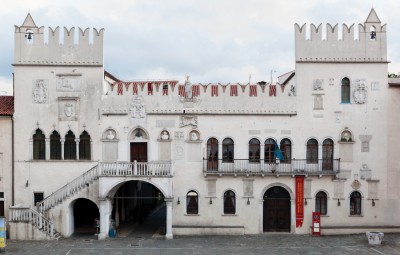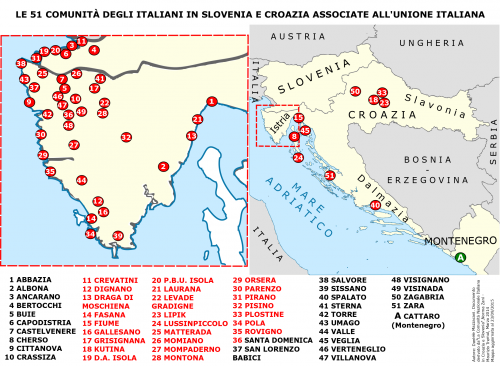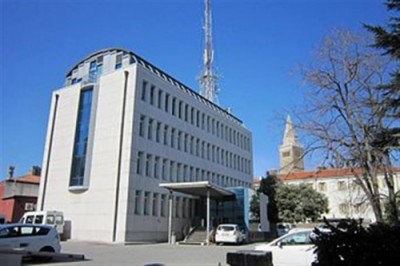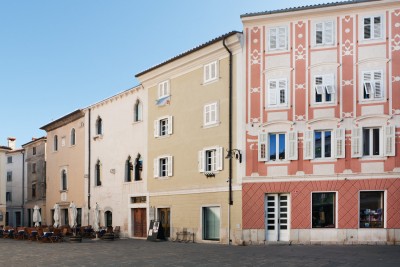ORIGINS
The Italian presence in Istria dates back to the Ancient or better Roman Era and has largely contributed to the carving of the nowadays Istrian territory. Talking about the Italian presence in Istria implies an understanding of its important historical impact, testified by important archeological sites and findings, the urban structures of the Istrian towns and villages, the rich architectural, artistic, cultural, music and ethnographic heritage of Italian descent, the Italian language and its Istro –Venetian and Istro – Romance dialects.
In the 20th Century, the Istrian peninsula and especially the territory of historical settlement of the Italian National Community (hereafter the INC), has undergone under the government of eight different state sovereignties: the Austrian Empire, the Kingdom of Italy, the Third Reich Occupation, the Allied Military Government (AMG), the Yugoslav Military Administration, Yugoslavia, the Republic of Slovenia (and Croatia). The tragic historical events that have characterized the Istrian territory, with the violent confrontation of opposed totalitarian ideologies (Fascism, Nazism and Communism) and opposed nationalisms, have reduced the Italian presence to a minority. The Italian population of Istria, Fiume and Dalmatia has become a minority for a combination of various factors, the main being the massive exodus of the majority of its members (with the consequence of part of the population calling itself and being addressed as “esuli”/exiled) and the post- war instauration of a communist regime in Yugoslavia, which favored, de facto, the process of assimilation of the members who decided to stay (the so called “rimasti”/those who stayed).
Since 1991, following the dissolution of Yugoslavia, the INC has been divided into two countries, Slovenia and Croatia. Notwithstanding the geo–political fragmentation of the INC into the two new Republics of Slovenia and Croatia, the INC has managed to maintain its unity, despite its division into two sovereign states.

TERRITORY
In Slovenia, the Italian population lives along the Coast and in the immediate hinterland of the Municipalities of Ancarano (Ankaran), Capodistria (Koper), Isola (Izola) and Pirano (Piran). This area constitutes the so called Slovenian Istria.In Croatia, the Italian population is settled in Istria (in the coastal towns, in the area of Buie (Buje), in the hinterland of the towns of Parenzo (Poreč), Pinguente (Buzet), Pisino (Pazin) and Pola (Pula)), in the Quarnaro Region (in the city of Fiume (Rijeka) and in the islands of Cherso (Cres), Lussino (Lošinj) and Veglia (Krk)), in Dalmatia (in the cities of Zara (Zadar), Spalato (Split)), in the Bocche di Cattaro area in Montenegro and in Slavonia (Ploštine, Kutina, Lipik and Pakrac). All together, this population constitute the Italian National Community.

SIZE AND REPRESENTATION
The so-called Italian Communities (Comunità degli Italiani) are important organizational bodies at local level, which are spread all over the INC’s territory of historical settlement. There are 51 Communities of this kind, spread across Slovenia and Croatia and all of them are associated to the main association “Unione Italiana” (Italian Union), the organization that represents the Italian National Community as a whole in both countries.
In Slovenia there are seven (7) Italian Communities. These are volunteer associations, which operate mainly in the cultural, sport and social fields, with the aim of promoting the Italian culture, language and identity. Furthermore, the fundamental rights of the INC are disciplined by:
- specific agreements signed between the Republics of Italy, Slovenia and Croatia and which the last two have inherited from the former Yugoslav State. We can recall, in the first place, the Special Statute annexed to the London Memorandum of 1954 and the Treaty of Osimo of 1975;
- new agreements, like the Memorandum between Italy, Slovenia and Croatia signed on January, 15th 1992 and the Treaty on Minorities (1996), the latter signed by Italy and Croatia;
- the main international instruments for the protection of minorities, like the European Charter for Regional or Minority languages (1992) and the Framework Convention for the protection of national minorities (1995) and
- the juridical and constitutional assets of Croatia and Slovenia, meaning these countries’ laws and other national legislative provisions regarding the protection of minority rights.
In the political sphere, both countries guarantee a certain degree of political representation for the INC within the legislative wing of power at both national (parliamentarian) and local (regional, municipality) level. Alongside these forms of political participation, in Slovenia there has been carved a unique form of organization, the so called “Self-governing Communities of the Italian Nationality” (Comunità autogestite della Nazionalità Italiana), which operate in the official bilingual territory of the (4) municipalities of Ancarano (Ankaran), Capodistria (Koper), Isola (Izola) and Pirano (Piran) – one (1) Self-governing Community per Municipality). The main role of these organizations is to work for the promotion and the safeguarding of the position of the INC within society, for the accomplishment of the specific minority rights as envisaged by the Constitution and for serving, over all, the needs and interests of the INC. They are important bodies within the political public sphere, as they guarantee an active participation of the INC in public life and favor the management of local affairs in an organized way. The four (4) Municipal Self-governing Communities are represented, at State level, by the so called CAN Costiera (Coastal CAN), located in the town of Capodistria (Koper).
Finally, a few words must be spent to describe the main institutions of the INC, which are active in the mass-media sphere, like the Italian Programs of RTV Capodistria, the daily newspaper La Voce del Popolo (edited by the publishing House Edit Fiume) and those working in the sphere of research, like the Centre for Historical Researches of Rovigno, the Italian Centre for promotion and culture Carlo Combi etc..


LINKS
www.unione-italiana.eu
www.cancostiera.org
https://capodistria.rtvslo.si/
www.edit.hr
www.centrocombi.eu
www.crsrv.org
www.ilmandracchio.org/
www.jezik-lingua.eu/
www.info-libro.eu
https://www.istroveneto.com/
OTHER RESOURCES
- Egidio Ivetic A.c.d., Istra skozi čas. Priročnik regionalne zgodovine Istre z navedbami o mestu Reka, Unione Italiana - Università popolare di Trieste - Centro di Ricerche Storiche di Rovigno, Collana degli Atti N° 32, Rovigno, 2011, pp. 735. - Egidio Ivetic A.c.d., Istria nel tempo. Manuale di storia regionale dell’Istria con riferimenti alla città di Fiume, Unione Italiana - Università popolare di Trieste - Centro di Ricerche Storiche di Rovigno, Collana degli Atti N° 26, Rovigno, 2006, pp. 712. - Egidio Ivetic A.c.d., Istra kroz vrijeme. Pregled povijesti Istre sa osvrtom na grad Rijeku, Unione Italiana - Università popolare di Trieste - Centro di Ricerche Storiche di Rovigno, Collana degli Atti N° 30, Rovigno, 2009, pp. 734.
- A.c.d. Alessandra Argenti Tremul, Istria nel tempo “La storia dell’Istria dalle origini al XX secolo” - Istra skozi Čas “Zgodovina Istre od začetka do 20. Stoletja”-Istra u vremenu”Povijest Istre od najranijih početaka do 20.stolječa” - Istria through time” From its geological originins to the 20th century, RTV-Capodistria, Unione Italiana, Università Popolare di Trieste – 6 Documentari televisivi.
- Bernardo Benussi, L’Istria nei suoi due millenni di storia, Collana degli Atti N° 14, Centro di Ricerche Storiche di Rovigno – Unione Italiana Fiume – Università Popolare di Trieste, Venezia-Rovigno, 1997, pp. 670.
- Egidio Ivetic, Adriatico Orientale. Atlante storico di un litorale mediterraneo, Collana degli Atti N° 35, Centro di Ricerche Storiche di Rovigno – Unione Italiana Fiume – Università Popolare di Trieste, Rovigno 2014, pp. 415.
- Dario Alberi, Dalmazia storia, arte, cultura, Lint, Trieste, 2008, pp. 1.696 - Dario Alberi, Istria storia, arte, cultura, Lint, Trieste, 2009, pp. 1.999.
- Francesco Semi, Istria e Dalmazia. Uomini e tempi. Istria e Fiume, Del Bianco Editore, Udine, 1991, pp. 700. - Francesco Semi, Vanni Tacconi, Istria e Dalmazia. Uomini e tempi. Dalmazia, Del Bianco Editore, Udine, 1992, pp. 726.
- Suzana Todorovič, Narečje v Kopru, Izoli in Piranu, Libris, Capodistria, 2016, pp. 272. - Suzana Todorović, Il dialetto istroveneto a Capodistria, Isola e Pirano, Libris - Unione Italiana, Capodistria, 2017, pp. 255.
- Nives Zudič Antonič, Storia e Antologia della letteratura italiana di Capodistria, Isola e Pirano, Unione Italiana, Capodistria, 2014, pp. 508. - Nives Zudič Antonič, Zgodovina in antologija italijanske književnosti Kopra, Izole in Pirana, Unione Italiana, Capodistria, 2014, pp. 316.
- Acd. Nelida Milani, Roberto Dobran, Le parole rimaste. Storia della letteratura italiana dell’Istria e del Quarnero nel secondo Novecento – Volume I, Pietas Iulia-EDIT, Pola-Fiume, 2010, pp. 728. Acd. Nelida Milani, Roberto Dobran, Le parole rimaste. Storia della letteratura italiana dell’Istria e del Quarnero nel secondo Novecento. Volume II, Pietas Iulia-EDIT, Pola-Fiume, 2010, pp. 832.
- Ezio Giuricin, Elvio Baccarini, Maurizio Tremul, La battana - Letteratura dell’esodo, EDIT, Fiume, 1990, pp.271 - Ezio Giuricin, Elvio Baccarini, Maurizio Tremul, La battana - Letteratura dell’esodo pagine scelte, EDIT, Fiume 1991, pp. 491.
- Clio Diabatè, Roberta Vincoletto, Maurizio Tremul, Un viaggio nel mondo delle istituzioni Italiane in Slovenia e in Croazia – Potovanje v svet Italijanskih ustanov v Sloveniji in na Hrvaškem, Unione Italiana, Capodistria, 2012, pp. 56.
- Egidio Ivetic, La popolazione dell’Istria nell’età moderna. Lineamenti evolutivi, Collana degli Atti N° 15, Centro di Ricerche Storiche di Rovigno – Unione Italiana Fiume – Università Popolare di Trieste, Trieste-Rovigno, 1997, pp. 450.
- Salvatore Žitko, Capodistria la città e il suo patrimonio, Centro Italiano Carlo Combi, Capodistria, 2011, pp. 159.
- AAVV, Analiza, Izvajanje in razvoj zaščite narodnih skupnosti v Sloveniji in Italiji, Unione Italiana, Capodistria, 2015, pp. 161. - AAVV, Analisi, applicazione e sviluppo della tutela delle minoranze in Italia e Slovenia, Unione Italiana, Capodistria, 2015, pp. 182. - AAVV, Atti del Convegno” Le Minoranze Nazionali nella nuova Europa” Palazzo Pretorio-Capodistria,19 novembre 2012-Zbornik posveta “Narodne manjšine v novi Evropi” Pretorska palača- Koper,19. November 2012, Unione Italiana, Capodistria, 2015, pp. 152.
- ErikŠvab, MaurizioTremul, MinTur Slovensko-italijanski skupni turizem: kulturna dediščina in manjšineTurismo integrato italo-sloveno: patrimonio culturale e minoranze, Unione Italiana- Euroservis S.r.l.-d.o.o., Capodistria-Trieste, 2007, pp. 243. - Maurizio Tremul, ErikŠvab, MinTur Turismo integrato italo-sloveno:patrimonio culturale e minoritario-Slovensko-italijanski skupni turizem:kulturna dedišćina in manjšine, Unione Italiana- Euroservis S.r.l.-d.o.o., Capodistria-Trieste, 2007, pp. 235.




